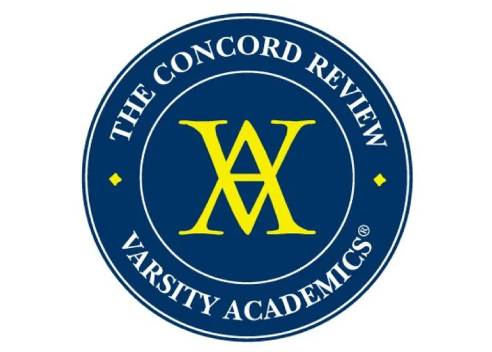What is the STS at Top 10 U.S. Universities?
As we all know, STEM majors have gained momentum in recent years and have become a popular choice for studying abroad, not only because of its professionalism, but also because of its superior treatment after studying abroad...
The development of the times has also pushed STEM to unprecedented heights. In contrast, liberal arts education has begun to be questioned - so, must liberal arts and STEM be opposites? the answer is negative. It is no longer time to rely on one discipline or technology to dominate the world - the development of science and technology has brought about many social and ethical issues that need to be solved, so new interdisciplinary upstart majors were born - science, Science, Technology and Society (STS) !
What is STS?
STS refers to the abbreviation of "Science, Technology and Society" in English , which means "Science, Technology and Society" . This is an interdisciplinary subject that studies the relationship between scientific and technological progress and the development of human society.
It is a relatively new field, gradually developed since the 1970s, which explores the interaction and impact between scientific knowledge, technological systems and social development . It requires students to not only master basic scientific and technological knowledge, but also learn to use humanities and social science methods and perspectives to analyze and explore the development and innovation of science and technology in today's world . From the control of military technology, to the ethical challenges faced by assisted reproduction, to network information security that is closely related to today's daily life, these are all topics studied by STS.
The rise of this professional research field reflects the differences between natural sciences and humanities faced by human beings in the process of social development. STS professional research is trying to overcome this difference and broaden students' understanding of the social and cultural aspects of science and technology. .
American universities offering STS programs
1.Stanford University
The Stanford University STS program was established in 1971 and was one of the first American universities to offer this program . It offers students two degrees: Bachelor of Arts and Bachelor of Science . At Stanford, students not only need to learn and practice science and technology, but also need to study the historical and social background of science and technology. At the same time, they need to conduct in-depth learning in 2-3 subdivisions, and have a broader understanding of the impact of science and technology on the social level cognition.
The official website of Stanford University also uses a very classic joke to explain the difference between STS majors and science, engineering or medicine :
Two small fish were swimming in the water. A frog sitting on a water lily spotted them and asked them: "Children, how is the water today?" The two small fish muttered: "It's not bad, grandma." , After a while, one of the little fish asked his companion: "What is water?"
Scientists conduct experiments, engineers invent, and medical staff treat patients. STS is equivalent to water. It is a social, political, legal, economic and cultural environment that shapes, promotes or inhibits scientific and technological research and invention. In turn, it is constantly affected by the ever-developing science and technology.
Stanford's STS major provides a comprehensive range of subdivisions , including catastrophic risks and solutions, communications and media, innovation and organizations, life sciences and health, politics and policy, social dynamics of data and information, etc. This project aims to cultivate students' creativity , and knowing and understanding the intricate relationships and interactions between things is the prerequisite for innovation.
2.Brown University
STS majors have more choices at Brown. In the science direction , students need to choose one of physics, life sciences, mathematics and computer science; in the humanities direction , there are history and philosophy of science, gender and science, race, science and ethnicity, health and medicine, environment and society, etc. Theme direction.
After completing the project, students will be able to:
- Examine scientific theory and policy from historical, philosophical, anthropological, and sociological perspectives;
- Analyze the practices, norms, and values that define the concept of “science”;
- Ability to monitor and interpret the path of scientific knowledge from the laboratory to the public domain;
- Design unique focus in consultation with consultants;
- develop complex speaking and writing skills;
- Write original research papers;
3.University of Pennsylvania
Due to the different research fields and emphases in different universities, the names of STS majors may be somewhat different.
The project name of Penn University is "Science, Technology and Society, or STSC" . This major can help students learn to think critically , such as:
Why is modern science like this? How and why do specific technologies and technological systems emerge, evolve, and become obsolete? How do science and technology sometimes exacerbate racial, gender, and class inequalities? How can they be changed to reduce this inequality? How does science and technology shape society, and how does society shape science and technology?
STSC is located in the Department of History and Sociology of Science at the University of Pennsylvania .
4.Johns Hopkins Universit
At Johns Hopkins University, STS is a collaboration between the Department of History of Science and Technology and the Department of History of Medicine, offering undergraduate majors and minors in the history of science, medicine, and technology .As an interdisciplinary course based on the humanities, the school encourages students to understand the historical roots of their own culture and other cultures, especially the development of science, medicine and technology.The official website also mentions that the program is ideal for science double majors and pre-med students .
5.Northwest University
At Northwestern University, the project name is "Science in Human Culture, or SHC" , which is Northwestern University's "scientific research" project. Here, teachers and students use a variety of interdisciplinary tools to study the consequences of science, technology, and medicine. Worldwide change.
In addition, there are The Science & Society Certificate Program of Duke University , the History, Philosophy, and Social Studies of Science and Medicine (HIPS) program of the University of Chicago , etc., all of which have STS presence.
What kind of students are suitable for STS majors?
It is not difficult to understand from the cross-disciplinary nature of STS across liberal arts and sciences. Students applying for STS need to have certain accumulation and outstanding performance in humanities and social sciences as well as science and engineering, and demonstrate their thinking about people and society in the exploration of STEM . All in all, STS needs comprehensive talents with comprehensive development in humanities and sciences.
On graduation, STS students should be able to: identify, describe and use key concepts and disciplinary tools in science and technology; analyze and evaluate the social, cultural and political dimensions of scientific, technical and medical knowledge and their place in historical and contemporary contexts Purpose; Critically evaluate technical, scientific, engineering, and medical knowledge; Recognize and analyze how scientific, technical, engineering, and medical issues are shaped in public and professional settings.
Future prospects of STS major
Because STS involves a very wide range of study fields, covering philosophy, politics, history, social research and social analysis, technology and engineering, biomedicine, etc., STS graduates can have long-term careers in consulting, scientific research, management, development and other fields. development of. Previous STS graduates have achieved success in the fields of government, education, financial services, health care services, communications, law, manufacturing and technology .
Stanford alumni are part of an active STS community and pursue a variety of challenging and rewarding careers in many positions. The following is available for reference:
- Account Strategist, Google
- ESPN Associate Producer
- Microsoft Development Manager
- Clinton Foundation Health Care Program Manager
- AT&T Chief Financial Analyst
- Olympic Sports Marketing, Nike
- U.S. Department of Energy Project Analyst
- Software Engineer, Twitter
To sum up : in US undergraduate applications, such emerging majors that combine arts and science also breed more possibilities and opportunities. Combining STEM with social sciences and humanities is a good choice to some extent!



